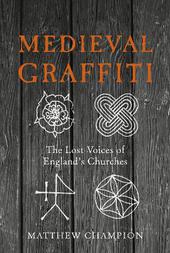
|
Medieval Graffiti: The Lost Voices of England's Churches
Hardback
Main Details
Description
Decoding the secret language of the churches of England through medieval carved markings and personal etchings on our church walls. For centuries carved writings and artworks in churches lay largely unnoticed. So archaeologist Matthew Champion started a nationwide survey to gather the best examples. In this book he shines a spotlight on a forgotten world of ships, prayers for good fortune, satirical cartoons, charms, curses, windmills, word puzzles, architectural plans and heraldic designs. Drawing on examples from surviving medieval churches in England, the author gives a voice to the secret graffiti artists- from the lord of the manor and the parish priest to the people who built the church itself. Here are strange medieval beasts, knights battling unseen dragons, ships sailing across lime-washed oceans and demons who stalk the walls. Latin prayers for the dead jostle with medieval curses, builders' accounts and slanderous comments concerning a long-dead archdeacon. Strange and complex geometric designs, created to ward off the 'evil eye' and thwart the works of the devil, share church pillars with the heraldic shields of England's medieval nobility.
Author Biography
Matthew Champion studied history and landscape archaeology at the University of East Anglia. As a freelance archaeologist he is widely regarded as England's leading expert on medieval graffiti inscriptions, and has worked with organisations such as English Heritage and the National Trust, as well as writing and lecturing extensively upon the subject. Matthew is currently Project Director of the multi-award winning Norfolk and Suffolk Medieval Graffiti Survey - and sometimes wonders why he doesn't have a real job. He lives in Fakenham, Norfolk.
ReviewsRare, lovely glimmers of everyday life in the Middle Ages. -- Dan Jones * The Sunday Times * While rigorous in its scholarship - packed full of information and insights which have come from research pursued over many years and collected by a dedicated team of surveyors - it is eminently readable. -- William Anderson, University of Melbourne * Peregrenations Journal *
|